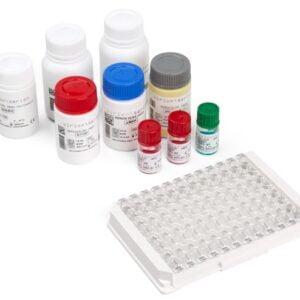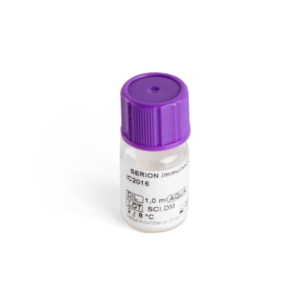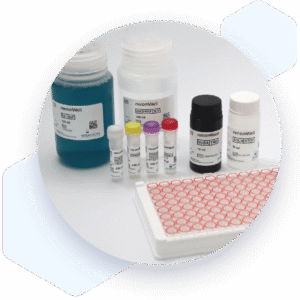| Weight | 1 lbs |
|---|---|
| Dimensions | 9 × 5 × 2 in |
| target | Legionella pneumophila 1-7 reactive IgG |
| species reactivity | Legionella pneumophila |
| applications | ELISA |
| assay type | Indirect & quantitative |
| available sizes | 96 tests |
Legionella pneumophila 1-7 IgG ELISA Kit ESR106G
$364.00
Summary
- Virion/Serion Diagnostic Kit for research use (RUO)
- Legionella pneumophila 1-7 IgG ELISA Kit
- Suitable for IgG detection
- Ready-to-use
- 96 tests
Legionella pneumophila 1-7 IgG ELISA Kit ESR106G
| kit | ||||||||||||||||||
|---|---|---|---|---|---|---|---|---|---|---|---|---|---|---|---|---|---|---|
| Assay type Indirect ELISA | ||||||||||||||||||
| Research area Infectious Disease | ||||||||||||||||||
| Sample type Serum, plasma, whole blood | ||||||||||||||||||
Components
| ||||||||||||||||||
| Storage Store at 2-8°C. | ||||||||||||||||||
| Associated products Legionella pneumophila Antigen (BA106VS) Legionella pneumophila IgG Control Serum (BC106G) Legionella pneumophila IgM Control Serum (BC106M) Legionella pneumophila 1-7 IgG ELISA Kit (ESR106G) Legionella pneumophila 1-7 IgM ELISA Kit (ESR106M) |
| target relevance |
|---|
| Organism Legionella pneumophila |
| Protein names Legionella pneumophila |
| Structure and strains Legionella pneumophila is an aerobic, pleomorphic, flagellated, non-spore-forming, Gram-negative bacterium of the genus Legionella. L. pneumophila is the primary human pathogenic bacterium in this group. In nature, L. pneumophila infects freshwater and soil amoebae of the genera Acanthamoeba and Naegleria. This pathogen is found commonly near freshwater environments and will then invade the amoebae found in these environments, using them to carry out metabolic functions. L. pneumophila is also the causative agent of Legionnaires' disease, also known as legionellosis. Due to L. pneumophila s ability to thrive in water, it can grow in water filtration systems, leading to faucets, showers, and other fixtures and then spread through aerosolized water droplets. Once infected, this bacterium can cause pneumonia with symptoms such as fever, delirium, diarrhea, and decreased liver and kidney function. After its initial discovery, it was found that Legionella replicates inside amoeba, which suggests that bacteria replicating in environmental protozoa have the ability to exploit signaling pathways in human phagocytic cells. |
| Detection and diagnosis Due to the non-specific nature of the symptoms, diagnosis is primarily based upon the results of laboratory analyses. Rapid tests, which are also suitable for screening purposes, demonstrate the presence of Legionella specific antigens in patient's urine while serological methods serve to establish a differential diagnosis in cases of atypical pneumonia. The SERION ELISA classic Legionella pneumophila 1-7 IgG and IgM tests are based on a combination of diagnostically relevant antigens from the serovars 1 to 7 |
Data
Publications
| pmid | title | authors | citation |
|---|---|---|---|
| We haven't added any publications to our database yet. | |||
Protocols
| relevant to this product |
|---|
| ESR106G protocol |
Documents
| # | ||
|---|---|---|
| Please enter your product and batch number here to retrieve product datasheet, SDS, and QC information. | ||
Only logged in customers who have purchased this product may leave a review.





Reviews
There are no reviews yet.